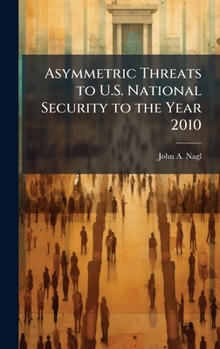Asymmetric Threats to U.S. National Security to the Year 2010
Select Format
Select Condition 
Book Overview
Asymmetric threats counter an adversary's strengths by focusing on its weaknesses. In the post-Cold War world asymmetric threats to U.S. national security are far more likely than they were just a decade ago. This paper considers asymmetric threats from the perspective of ends, ways, and means. It examines American and "enemy" ends, as well as several means of projecting force asymmetrically, and also suggests that symmetrical means of applying force can be asymmetric threats if they are used in certain ways. The paper concludes that perhaps the most serious threat to U.S. national security for the next ten years is the organizational culture of the Department of Defense and of its component services that leads them to prepare almost exclusively for symmetrical threats. The nation must maintain its ability to deter symmetric threats to U.S. national security, but that capability will be insufficient to protect against all of the threats that the nation is likely to face in the near future. While continuing to prepare to fight the wars the U.S. expects to fight, it must also begin devoting more resources to preparing to be hit where it does not expect to be.
This work has been selected by scholars as being culturally important, and is part of the knowledge base of civilization as we know it. This work was reproduced from the original artifact, and remains as true to the original work as possible. Therefore, you will see the original copyright references, library stamps (as most of these works have been housed in our most important libraries around the world), and other notations in the work.
This work is in the public domain in the United States of America, and possibly other nations. Within the United States, you may freely copy and distribute this work, as no entity (individual or corporate) has a copyright on the body of the work.
As a reproduction of a historical artifact, this work may contain missing or blurred pages, poor pictures, errant marks, etc. Scholars believe, and we concur, that this work is important enough to be preserved, reproduced, and made generally available to the public. We appreciate your support of the preservation process, and thank you for being an important part of keeping this knowledge alive and relevant.
Related Subjects
Education Education & Reference History Political Science Politics & Social Sciences




